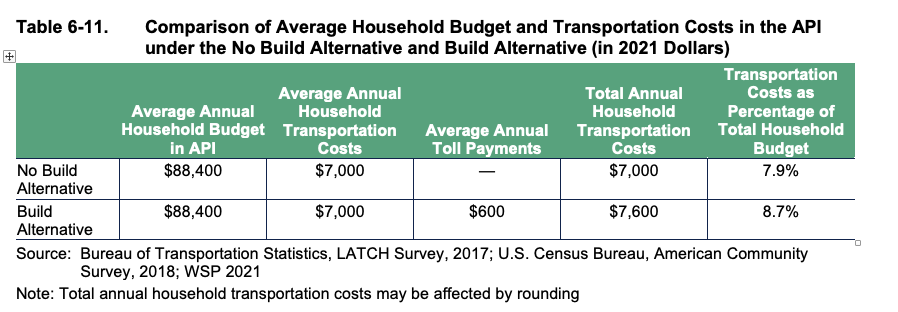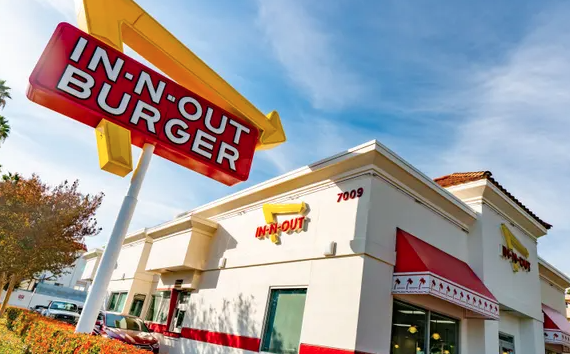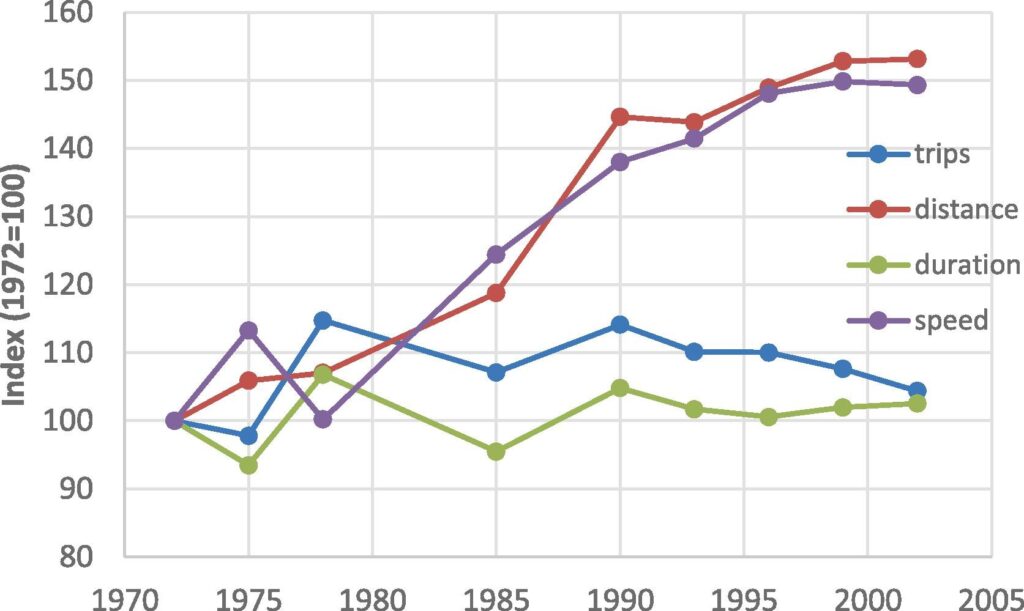What City Observatory did this week
ODOT’s planned I-205 tolls will cost the average local household $600 annually. The Oregon Department of Transportation just released its Environmental Assessment for the proposed I-205 highway widening project. The project would be paid for by tolling traffic on the roadway as much as $4.40 at the peak hour.
The project’s economic report concludes that the typical household in Clackamas County will pay about $600 per year in tolls. Regular commuters on I-205—those who drive daily at morning and afternoon peak hours—will have to pay $2,200 per year in tolls under the ODOT plan. Why are the tolls so high? OregonDOT’s tolls are set high enough to generate the revenue needed to pay for the roughly $1 billion project (plus interest costs) over the next 20 to 30 years. While the purpose of the project is to reduce congestion, it’s likely these toll levels are so high that traffic will fall dramatically–meaning that the expensive freeway expansion isn’t needed.
Must Read
Even an unbuilt highway can destroy a neighborhood. Writing at Bloomberg City Lab, Megan Kimble profiles the impacts of the proposed I-49 freeway expansion project in Shreveport Louisiana. Its well understood that previous highway construction projects have systematically devastated urban neighborhoods, but Kimble reports that just the potential for this freeway widening through the Allendale neighborhood of Shreveport has already done its damage. Once a highway department announces its construction plans, it has a chilling effect on private investment in the area: who wants to buy a home in the path of, or worse yet, right next to a new highway project. That’s exactly what’s happened in Allendale, where highway planners have a proposed “Inner City Connector” which aims to speed traffic by cutting a swath through disinvested Black neighborhoods.
Allendale’s freeway fight sets the stage for a reprise of a long established urban drama, with freeways plowing through minority neighborhoods. Its something that the current administration has acknowledged and says it wants to correct, but that’s very much a live issue in Shreveport. Kimble writes:
[Transportation Secretary Pete] Buttigieg and President Joe Biden have committed to repairing this harm, which is usually referred to in the past tense. But in Allendale, many residents see the Inner-City Connector as a contemporary variation on this pattern — a low-income Black neighborhood threatened with destruction to save drivers a few minutes of travel time. And they built a coalition of their own to resist.
Economic development hits a new nadir: subsidies for In-and-Out burger. Cities and states, it seems, will subsidize almost any business, as long as its clothed in the language of economic development and job creation. The latest–and one of the most egregious examples comes from Tennessee, where the state has awarded $2.75 million in economic development assistance to the California drive-thru hamburger chain “In-and-Out-Burger” to build an office and restaurants in the Volunteer State. Restaurants are a particularly good example of a “local-serving” business, meaning most, if not all of the spending (and jobs) for such businesses will be driven by the appetites of Tennesseans. Subsidizing In-and-Out-Burger won’t lead to any more eating out, or spending in in Tennessee; but what it will do is advantage a large, out-of-state business in competition against every Mom and Pop restaurant in the state.
It’s tragic to think that you can build your economy by subsidizing the expansion of one fast-food chain to the likely competitive detriment of all the others, but that’s the current state of the art in what passes for professional economic development in much of the United States.
Wales puts an end to highway expansions. Regular readers of City Observatory will be familiar with the science of induced travel: building more roadway capacity does little to reduce congestion, and instead, simply stimulates more driving, pollution and traffic. That realization has dawned full force on policy-makers in Wales, who, after a careful review of the scientific literature, have largely pulled the plug on further roadway expansions in Wales.
The Welsh government said all future roads must pass strict criteria which means they must not increase carbon emissions, they must not increase the number of cars on the road, they must not lead to higher speeds and higher emissions, and they must not negatively impact the environment.
The background is this: In 2021, the national government put highway projects on hold, pending a policy review. The conclusion, based on a careful examination of the results of past expansion projects, led the government to cancel or greatly revise 44 of 59 pending road projects. Those that are being allowed to proceed are mostly smaller scale improvements.
New Knowledge
The illusion of travel time “savings.” The typical rationalization for many highway expansion programs is that they will produce big economic benefits to travelers by reducing travel times. If you can drive faster, the reasoning goes, that will knock a few minutes off your trip, and the time that’s freed up is something you can use (and will value). There are a lot of problems with this theory, chief among them the reality of induced travel (which means that if a road becomes faster or has higher capacity, more people will use it, and quickly erase the travel time savings). But even if a road is faster, that doesn’t equate to actual time “savings” according to a thoughtful analysis published in Transportation Research Interdisciplinary Procedings.
The trouble with the idea of travel time savings is the partial equilibrium or “ceteris paribus” (all other things equal) assumption that’s lurking in this calculation. If all trip taking remains exactly the same, and all development remains just as it is, in theory, faster travel ought to translate into less time spent traveling. But in practice, and over time, other things don’t remain the same, they change, in response to the faster travel time. When we can drive faster, we travel farther. And recognizing that, over time, activities and people spread out further. The famous Marchetti’s constant is the observation that for centuries, cities have been arranged so that most daily travel is about thirty minutes in one direction. Faster travel translated into larger, less dense cities, but not shorter travel times.
This effect plainly shows up when we look at historical trends in travel speeds and travel behavior. As travel has become faster, trips have become longer, and people (and activities) have become more widespread. National travel surveys from Britain show that between 1972 and 2003, the speed and distance of trips increased in tandem, while the number of trips and the total amount of time spent traveling remained essentially flat.
The fact that faster travel speeds don’t translate into realized time savings suggests that the claims that highway advocates regularly make about the economic value attributable to highway expansions are largely false. That’s not to say that highways don’t have economic effects: but what they do is decentralize economic activity, and longer trips have significant private costs, as well as large social and environmental costs, that are seldom fully considered.
Cornelis Dirk van Goeverden, “The value of travel speed,” Transportation Research Interdisciplinary Perspectives
Volume 13, March 2022, 100530
In the News
StreetsblogUSA cited City Observatory’s research on the connection between education and urban prosperity in its story describing how weak public transit systems restrict access to education opportunities.





